
All images of the Olympus OM-D E-M10 were shot by Josiah Wiebe with a Canon 5D Mark II and EF 100mm f/2.8L Macro IS lens.
All other images were shot with the Olympus OM-D E-M10 and most have been tweaked in Adobe Lightroom. The photos are marked accordingly.
Introduction

Buying a camera today presents many challenges, not the least of which revolves around the technical nature of the hobby. It’s not entirely fair to assume that the average person doesn’t care about technical specifications, but I’m going to assume anyway.
I’m willing to bet the majority of people just want to take great photographs. They don’t care about sensor size, chromatic aberrations or apertures. They want to see great photos of their family, their vacation and their life without the fuss of the now insanely technical photography world.
I feel I’m allowed to assume this because I am one of those people.
About six months ago, my wife and I began planning our second trip to New York City and we wanted a way to document our trip for our future selves. Our first trip to New York City in 2013 was documented through our iPhone cameras. Despite the amazing technical feats of smartphone cameras these days, the images turned out poorly. As a result, we decided to buy a camera that we could use on our trip in 2014.
We wanted a small and light camera that we could easily carry anywhere. We wanted a camera that had an interchangeable lens system. And, most of all, we wanted a camera that would be challenging to master yet wouldn’t get in the way if we wanted to snap a quick photo of our nieces and nephews.
I was utterly amazed at the difficulty in finding an online review that documented the real aspects of buying and owning a camera. Every review talked about f-stops, ISO settings and RAW capabilities. All I wanted was a camera that could take pretty great photos on the spot without having to fiddle with four dials in the process.

I had to read and listen to the work of a technology writer who had found himself in the same shoes just a few months prior. Shawn Blanc’s review of the Olympus PEN E-PL5 and his discussion of the Olympus OM-D E-M10 on his podcast led me to my purchase. Shawn documented the real aspects of purchasing a camera and his insight inspired my approach to this review.
This review will shy away from technical jargon that few people truly understand.[1] Purchasing and owning a camera is more about purchasing and owning a system. Further, great cameras inspire you to shoot photographs and learn photography, while good cameras focus on pushing the limits of technical photography.
With that said, I believe one of the best cameras and systems to buy right now is the Micro Four-Thirds Olympus OM-D E-M10. The E-M10 is small and light, fast and nimble, and tons of fun to shoot with. There are loads of lenses to purchase and they’re all pretty cheap too. And the image quality is nothing short of breathtaking. If you’re looking for a camera within the same parameters as my wife and I six months ago, you shouldn’t look any further than the E-M10.
Design and Build
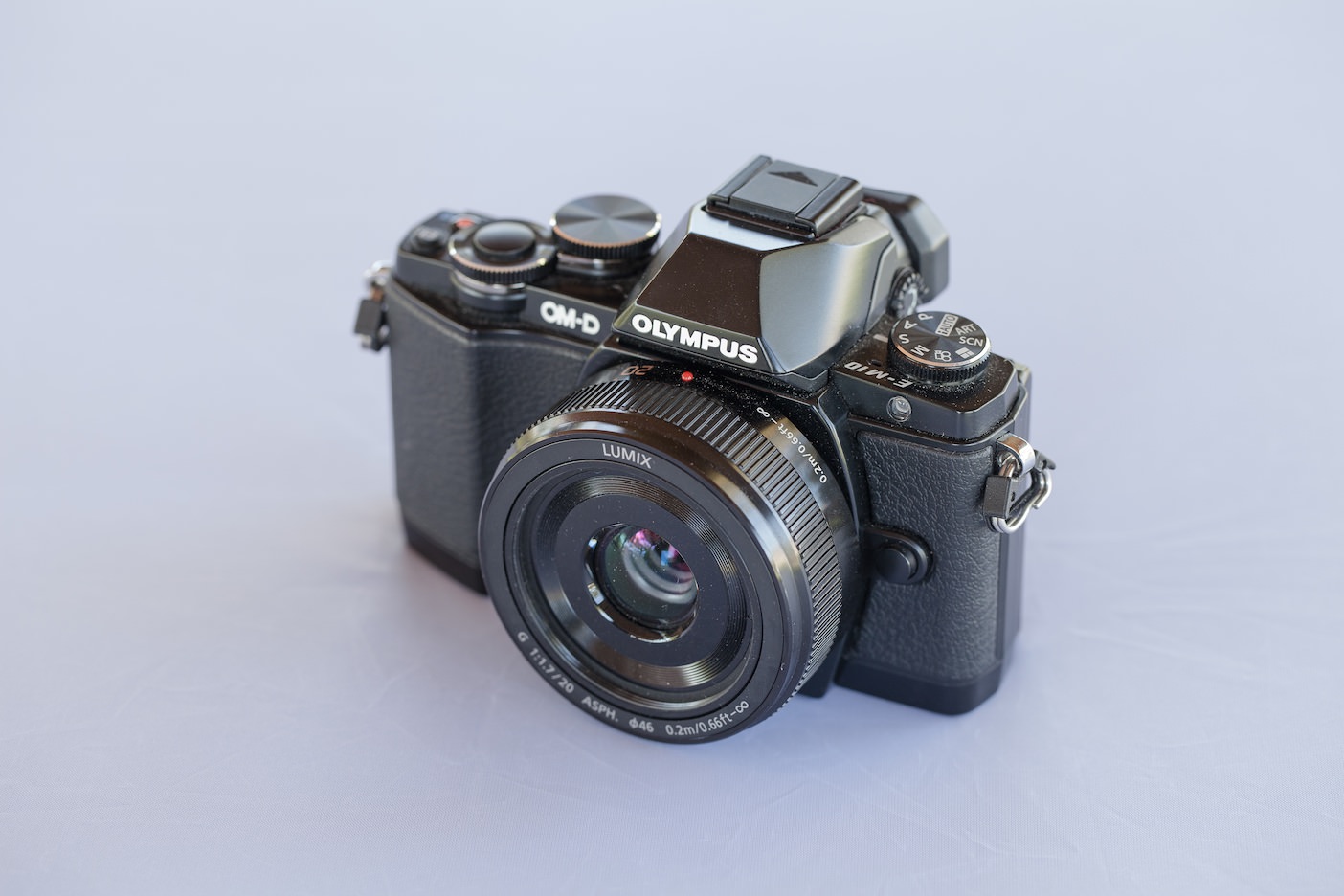
The first characteristic my wife and I were looking for was the ability to take a camera wherever without feeling like we were carrying an anchor around our necks. I purchased a Nikon D5100 and Nikkor 18-200mm travel lens a couple years back and we abhorred having to carry that camera around. Cameras have to be readily available when inspiration strikes and, if your camera is sitting on the shelf in the hotel room, it’s not going to do a very good job.
The Olympus OM-D E-M10 is incredibly small and light. With a pancake lens, the entire system can be carried in the palm of your hand. Carrying the E-M10 around your neck is orders of magnitude lighter than standard DSLR cameras and I have never once dreaded lugging the E-M10 with me.
The body is made of plastic and metal and is not weatherproof. I don’t have any issues with the build quality — I treat the E-M10 the same way I treat all my devices: carefully, gently and with a sense of caution. If you’re looking for a camera to take into the middle of a volcano, I suggest you look elsewhere.

Despite the E-M10’s simplistic approach, there are a few dials and buttons available if you want to customize some settings. The two dials can be customized to your preference of adjustments and they spin with a satisfying amount of tension. There are times where I have spun the front dial accidentally, but it’s nothing too annoying.
The top of the camera also sports a few “Fn” buttons which can be customized for some further options. I set mine in such a way as to promote my learning of the E-M10’s capabilities (i.e. Focus Peaking and Manual Focus) but they can be customized to a plethora of other options. These buttons are useful after you flip the E-M10 from Auto to any other shooting mode. If you stay in Auto, I would be surprised if you ever use them.
These buttons are relatively small and won’t be a pleasure to use for large fingered folks. All the buttons on the back of the E-M10 click nicely but they are awkwardly small. Most annoyingly, the on/off switch is in the weirdest place imagineable. I don’t understand the premise behind this decision, but after six months of use, muscle memory kicks in when I want to fire up the E-M10.

The back of the E-M10 sports a large swivel touchscreen. I have little use for a touchscreen except for the ability to quickly choose a focus point in the frame. If the E-M10’s autofocus continuously chooses the wrong focus point, the touchscreen allows for a really quick focus adjustment.

Other than the focus benefit, the touchscreen is less than ideal in general use. The wifi button in the top left corner of the screen is incredibly small and difficult to press. Controlling the Super Control Panel (which would be awesome if the touchscreen was better) is an exercise in extreme patience. And the entire menu system is controlled by the physical buttons on the back of the camera instead of by touch. I feel the touchscreen is one of the poorest features of the E-M10 and I’m glad Olympus provided ways to navigate the camera without the touchscreen.
One of the biggest selling features of the E-M10 over the recently announced Olympus PEN E-PL7 is its electronic viewfinder. Peering into the viewfinder is satisfying in bright light and I like how the electronic viewfinder changes the frame to match your changes in settings. For example, spinning the exposure compensation dial brightens or darkens the electronic viewfinder’s image. These are features you can’t get with DSLR optical viewfinders and they are unmatched in making me feel like I know what I’m doing.
To save battery, the electronic viewfinder shuts off when your eye (or any body part, for that matter) are away from the viewfinder’s sensor. I like the thought behind saving battery power, but in practice, I have found the viewfinder’s sensor to be extremely sensitive. Placing my finger a full three inches away from the sensor causes the electronic viewfinder to power up and the back touchscreen to power down. I personally find this sensitivity to be too great, yet I have no idea as to whether less sensitivity would answer my call. For now, I live with it.

Lastly, the E-M10 comes with a standard battery charger and neckstrap. I have no use for the neckstrap whatsoever. After seeing Leica’s strap implementation, I doubt I will ever use a neckstrap on the E-M10. The camera is small enough to hold in my hand or to carry in a small bag, so the only strap I see myself going with is a small wrist strap. Gordy’s Wrist Straps look great and are cheap, so I wouldn’t be surprised to see myself ordering one of those in the near future.
Ergonomics and Grip

Without a doubt, my infatuation with the E-M10 stems from its great ergonomics. There is one caveat to the E-M10’s ergonomics though: the aftermarket grip must be attached. The Olympus E-M10 grip prices in at about $55 and is essential for anyone with average sized hands or larger.
Without the grip, the E-M10 is thin, light and surprisingly small. With the Panasonic Lumix 20mm pancake lens attached, the entire system is thinner and lighter than the Canon 5D Mark II body on its own. The overall footprint of the E-M10 is incredibly small as well and won’t take up much space in your bag.

The E-M10 body is lined with a faux-leather grip that becomes slightly slippery if you have sweaty hands. The faux-leather looks and feels alright, but I’m not a fan of the nostalgic camera design these days.[2]
The dials and buttons all find nice spots on your right hand and fingertips and there is a little thumb holder to keep the camera balanced if you’re shooting one-handed.
But unless you have smaller than average sized hands, I don’t think you’ll be shooting one-handed with the E-M10 without the grip. The size of the camera body and the positioning of the dials and buttons force your hand into a very uncomfortable shooting position. My wife — who has small hands — has found the gripless E-M10 to be comfortable for shooting and treats the E-M10 much like a point-and-shoot. I, on the other hand, nearly dropped the camera the first time I held it up to chest height without a grip.


Throw that Olympus grip onto the body, though, and we’re talking.

The after-market Olympus E-M10 grip is not a battery grip and has been designed solely to improve the ergonomics of the camera. It adds about 3/4" to the bottom of the camera body and a full inch around the grip section on the right side of the camera body. The grip is entirely black and looks a bit funny on silver E-M10 camera bodies.[3] Although the aesthetic nature of the E-M10 may be marred by the after-market grip, I find the grip to perfectly fit into my average to slightly smaller-than-average hands.

Olympus also worked to properly design the grip on the bottom of the camera body. Instead of needing to unscrew the grip every time you need to remove the SD card or the battery pack, Olympus put in a clicking mechanism that allows the grip to easily slide off and reveals the battery pack/SD card hatch for quick access. Putting the grip back onto the E-M10 is also a breeze and does so with a satisfying click.



Despite my dissatisfaction with a gripless E-M10, the grip may not be for everyone. My wife immediately removes the grip when it’s her turn to take the camera for a spin. For smaller hands, I can see why she decides to ditch the grip. The E-M10 is light and leaving the grip behind only makes the entire system that much lighter. If you have average sized hands, I recommend purchasing the extra grip at the time of your E-M10 purchase.
Sensor and Lenses
As mentioned in the introduction above, the Olympus OM-D E-M10 is a Micro Four Thirds camera. This Micro Four Thirds sensor is approximately half the size of a full frame sensor which, to my level of expertise, really means nothing. I believe one needs to have experience and a true purpose for a full frame sensor before the differences truly become noticeable.

I witnessed Josiah use a full frame (35mm) camera to snap photos of the E-M10 body and I found the improvements in depth of field and frame size to be fairly impressive. The blown out backgrounds shot with his 5D Mark II and 100mm Macro lens are beautiful, but I just don’t see $2000 worth of improvements in full frame photographs. I promised I wouldn’t talk too specifically about technical specifications, so I’ll end with saying that the Micro Four Thirds sensor size does not greatly inhibit the features full frame cameras are known for excelling in. If you’re buying a camera to have top-of-the-line bokeh, you probably looked past any Micro Four Thirds camera long ago. If you’re looking for a small and light camera that can take pretty great portrait shots with decent bokeh, the E-M10 is a great choice.

Of course, blown out backgrounds and shallow depth of field are more features of the lenses you strap onto the front of your camera body than they are features of the body itself. The E-M10 can be purchased as a kit and comes with a 14-42mm kit lens. The lens is made of plastic and feels like plastic — I would stray away from rough-housing the kit lens as much as possible. The kit lens retracts into the lens body as seen in the photo above and extends when in its shooting mode. At f/3.5-5.6, you’re not looking at the fastest lens on the market, but you’ve certainly got a capable piece of glass when you need a zoom.

After three weeks of solely using the kit lens, I plunged deeper into the pocketbook and purchased the famous Panasonic Lumix 20mm f/1.7 pancake lens. As you’ve seen in all the product photos, the 20mm pancake lens (40mm in full-frame lingo) is hard to beat in terms of speed and size. The f/1.7 aperture (f/3.4 in full-frame lingo) is fantastic for low light shooting and provides some great — although somewhat hazy — blown out backgrounds.
The Panasonic Lumix 20mm lens is a prime lens, meaning you can’t zoom the lens in and out. Although it’s not capable of zooming, prime lenses generally make up for their single focal lengths by drastically improving image quality. Prime lenses don’t need to make any compromises for multiple focal lengths. As a result, prime lenses can maximize image quality at one focal length. After using a prime lens, I don’t think I’ll ever purchase a zoom lens unless it’s a gigantic sports lens I purchase when I become a professional.[4] Prime lenses are fantastic and the Micro Four Thirds system excels in providing great prime lenses for great prices.
For the purposes of the general shooter like my wife and I, the E-M10 and Lumix 20mm pancake lens are the perfect combination for travel. We couldn’t ask for a more versatile camera in such a small package.
Image Quality
Most importantly, after all the discussion around the ergonomics, the lenses and the small sensor of the E-M10, the single greatest factor that blows my mind every time I pick up the camera is its image quality. The first time I pulled out the E-M10 to snap some photos during my sister’s graduation festivities, a few people giggled at my small camera. It didn’t take long to impress the naysayers — the photos of her grad turned out better than I could have ever hoped for.
I don’t believe for a second that you can purchase a high(er)-end camera and immediately become a professional photographer. Professionals know how to maximize the capabilities of their cameras and they know the dos and don’ts of the photographic world. Purchasing an E-M10 will not create a career or business for you overnight.
But I will guarantee that an E-M10 purchase will immediately improve the quality of your iPhoto library if you believe your iPhone is good enough. iPhones are incredible, but there’s still a powerful element of having a dedicated photo shooter that can fit in the palm of your hand.
Below are some of my favourite — and hopefully best — photographs I’ve shot since we purchased the E-M10.


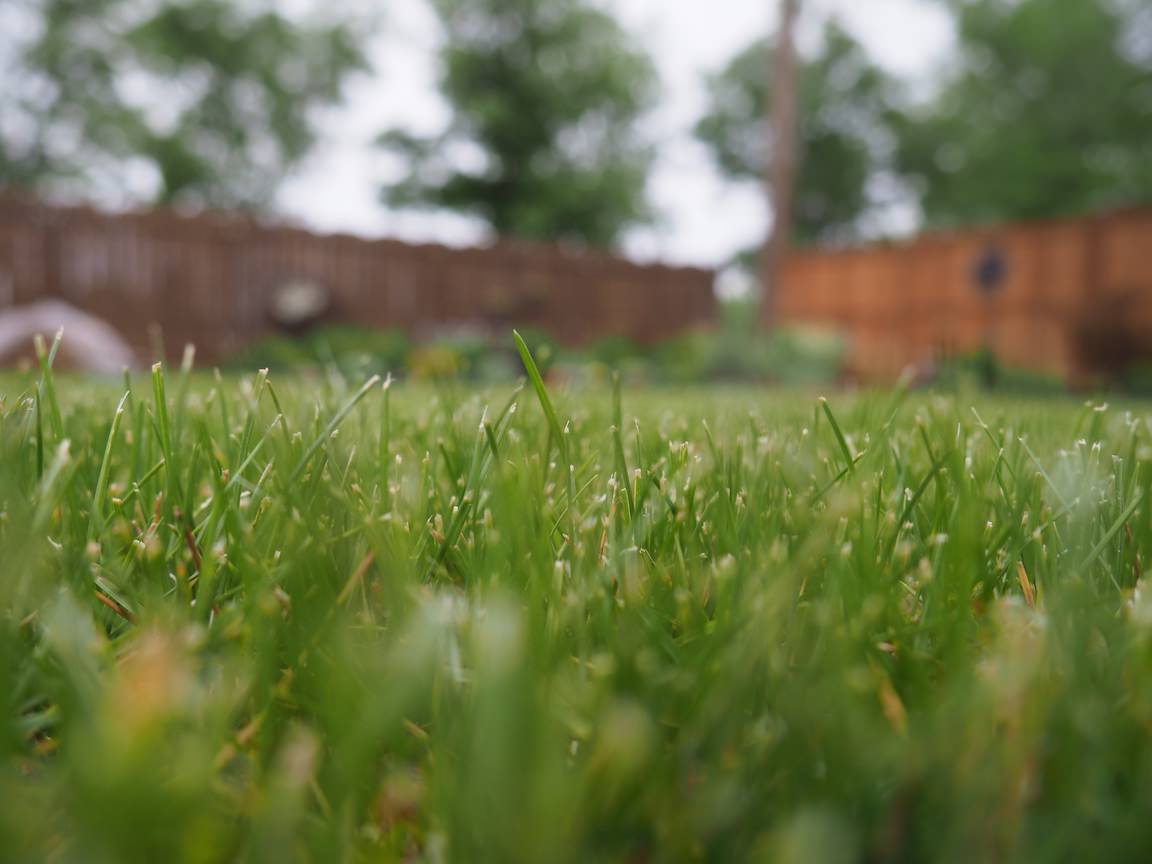
When browsing through my photo library, I was very surprised to find this photo unedited and shot with the kit lens. The bokeh in the background is hazy, but I was pleasantly reassured that a Micro Four Thirds sensor was still capable of blowing out backgrounds at f/3.5.
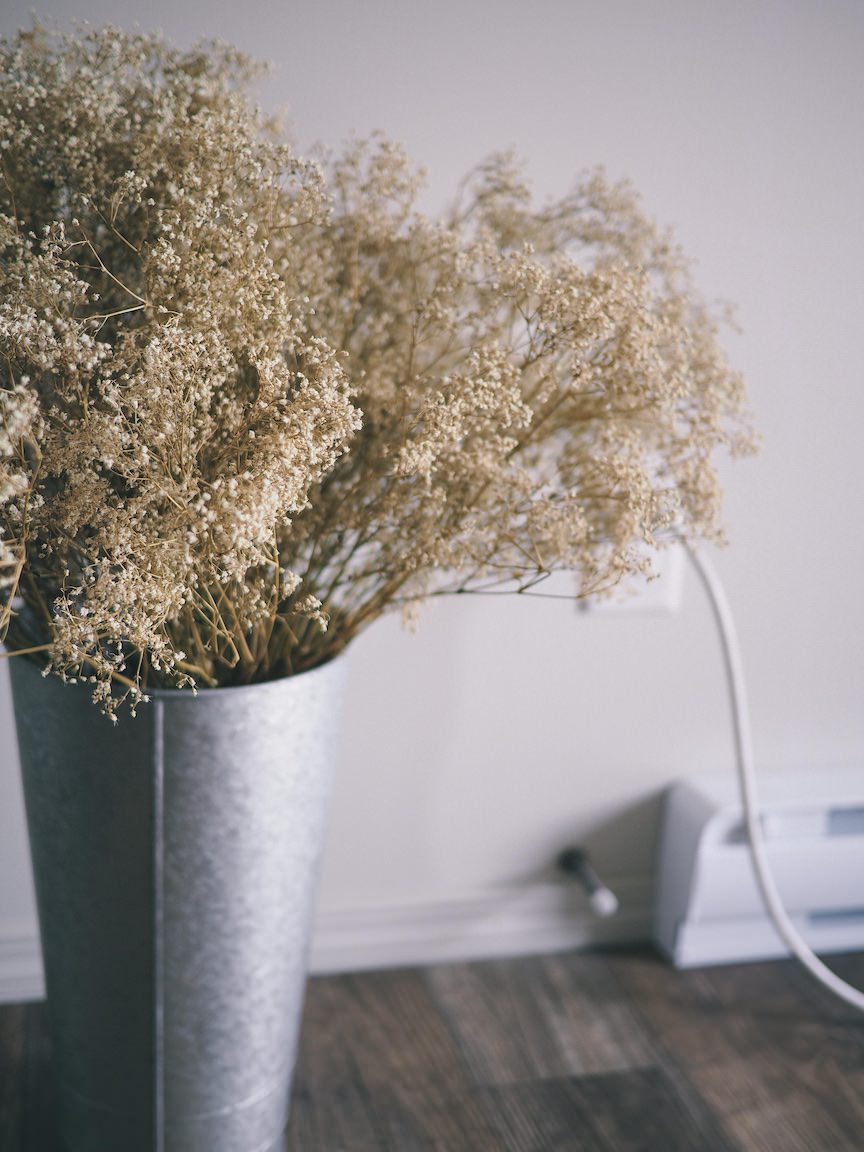




This photo of my niece was shot in low light with high levels of contrast. I was amazed at how sharp and how true this image turned out despite the low light. I can’t say enough about that 20mm lens.

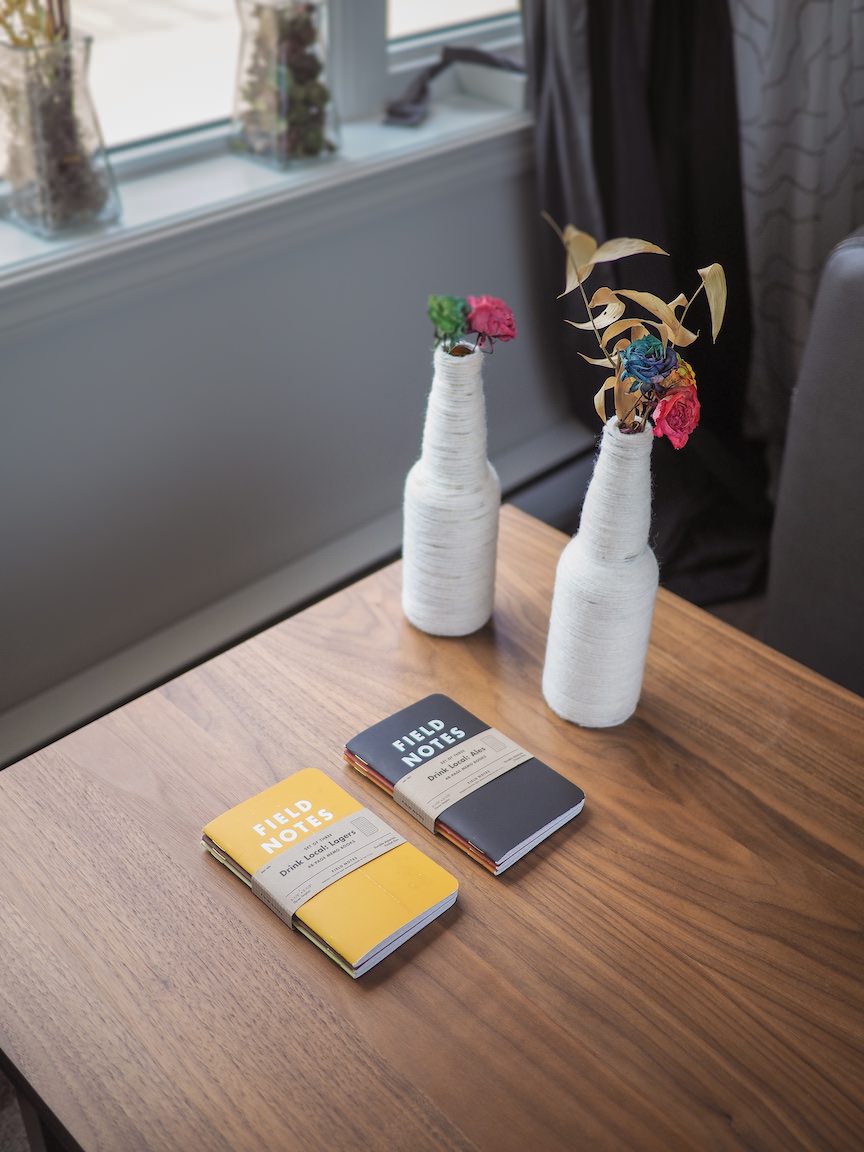

The E-M10 has Manual Priority, Shutter Speed Priority, Aperture Priority and Program shooting modes. I generally keep the E-M10 in Aperture Priority and fire away.
The above image, however, was shot in Shutter Speed Priority because I wanted to show the quick movement of people flowing through Grand Central in New York City. I always thought these kinds of photos were only possible with high-end DSLRs. I couldn’t be happier to experiment with different shooting modes when the situation arises.

I had to remain truthful when declaring whether I edited these photos or not. The above photo was indeed edited, but the level of retouching is so minimal you’d be hardpressed to tell the original from the edited version. Again, the 20mm f/1.7 Lumix lens is so great in low light and is the ultimate everyday and travel lens.
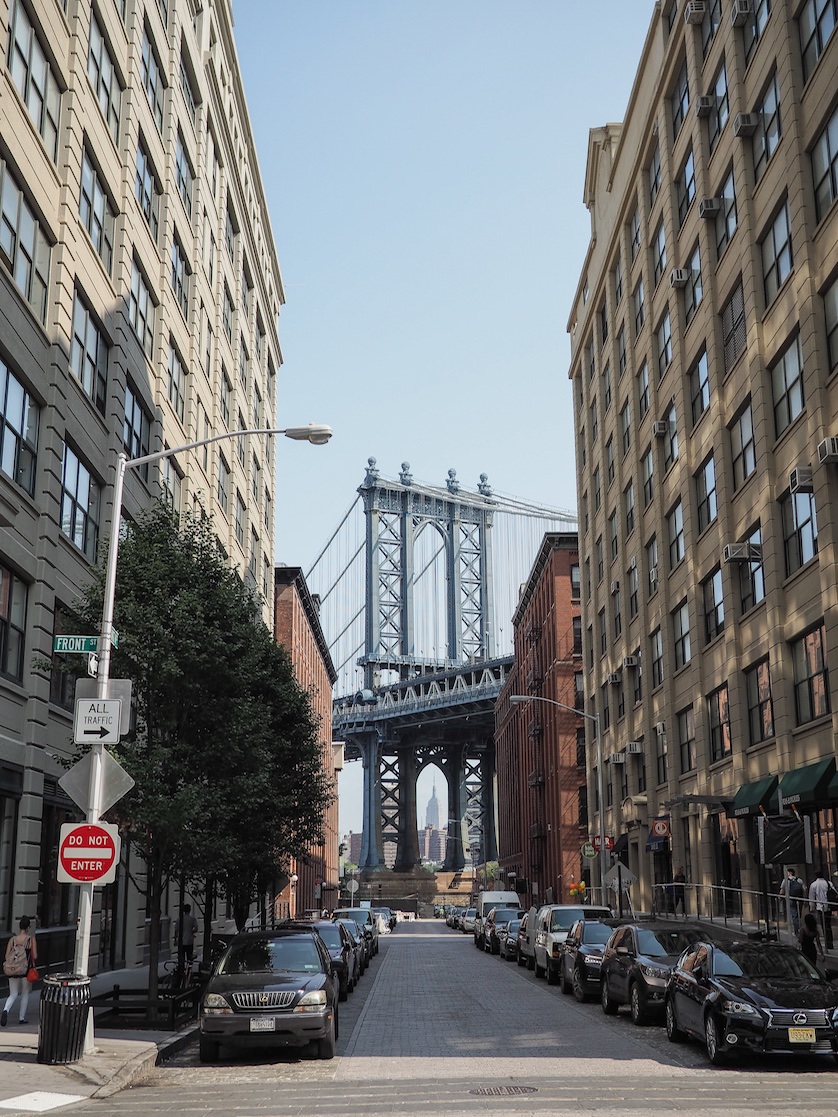


Beauty is generally in the eye of the beholder and this image is my favourite image to date. It has been retouched to a fairly extensive level, but sometimes that retouching works out great. I love this image and I love the story it tells. If I can snap a photo like this once every six months, I’ll be a very happy photographer.

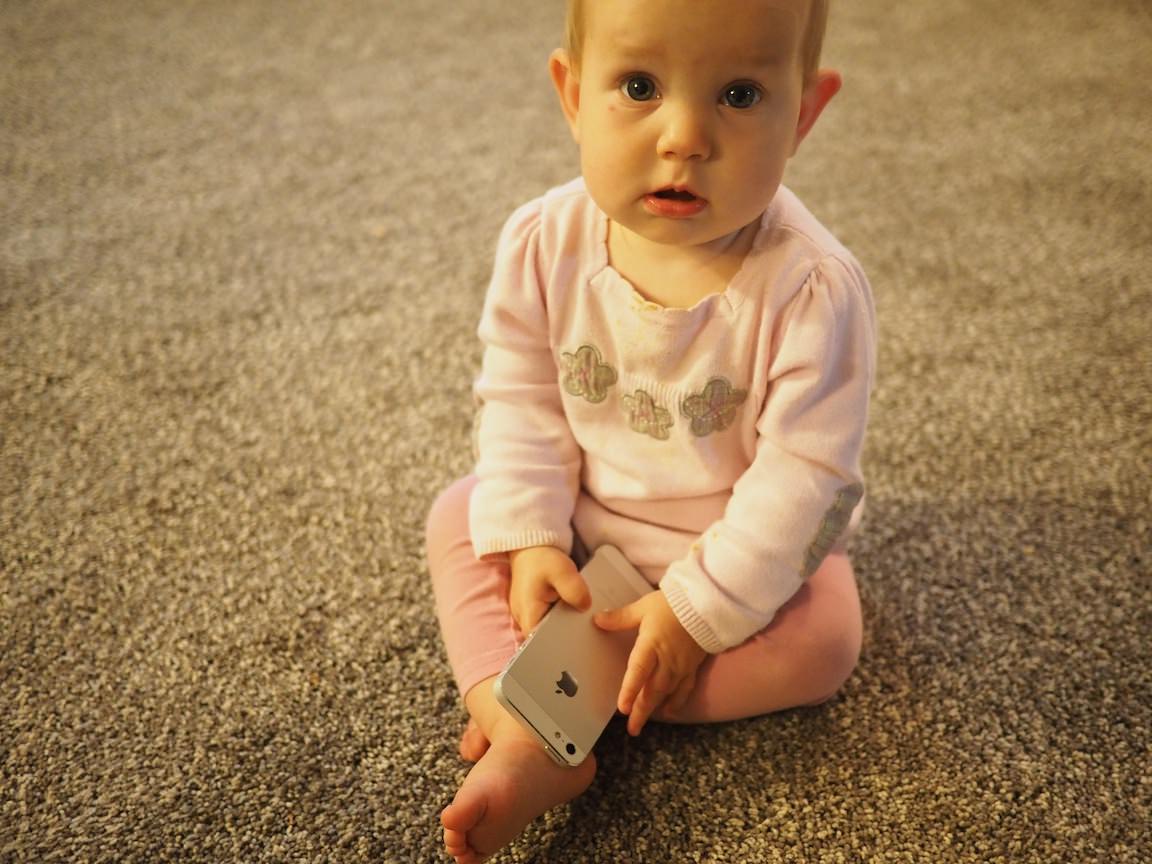
Once more, this image was shot in a basement with two incandescent lights on the wall behind and to the side of my youngest niece. This image is unedited and only cropped for the sake of framing.

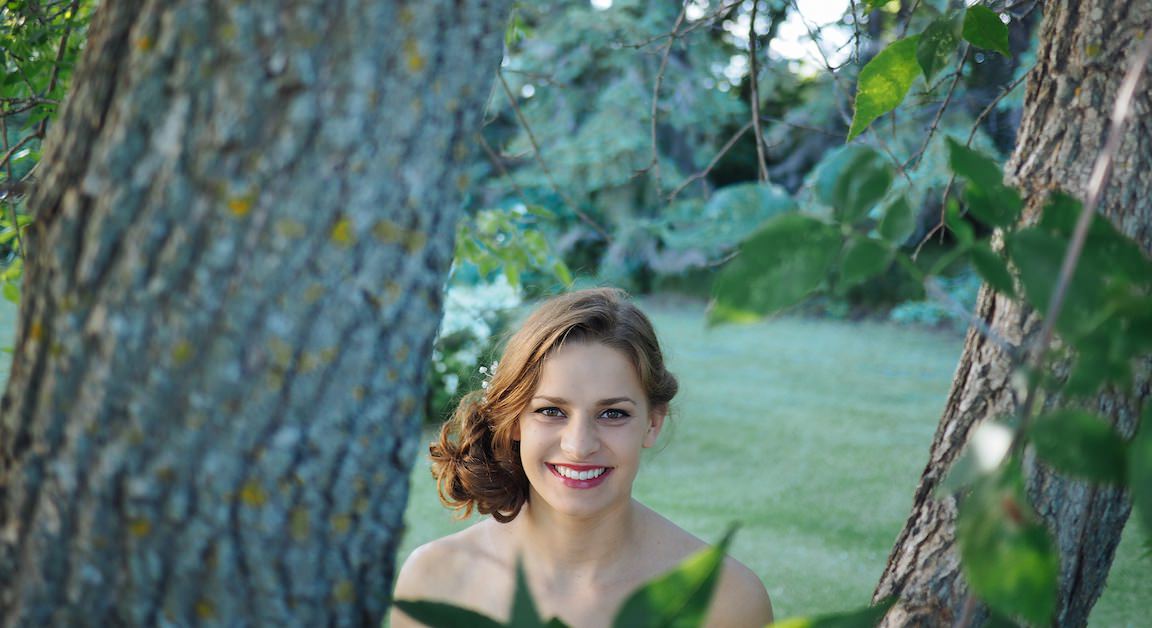


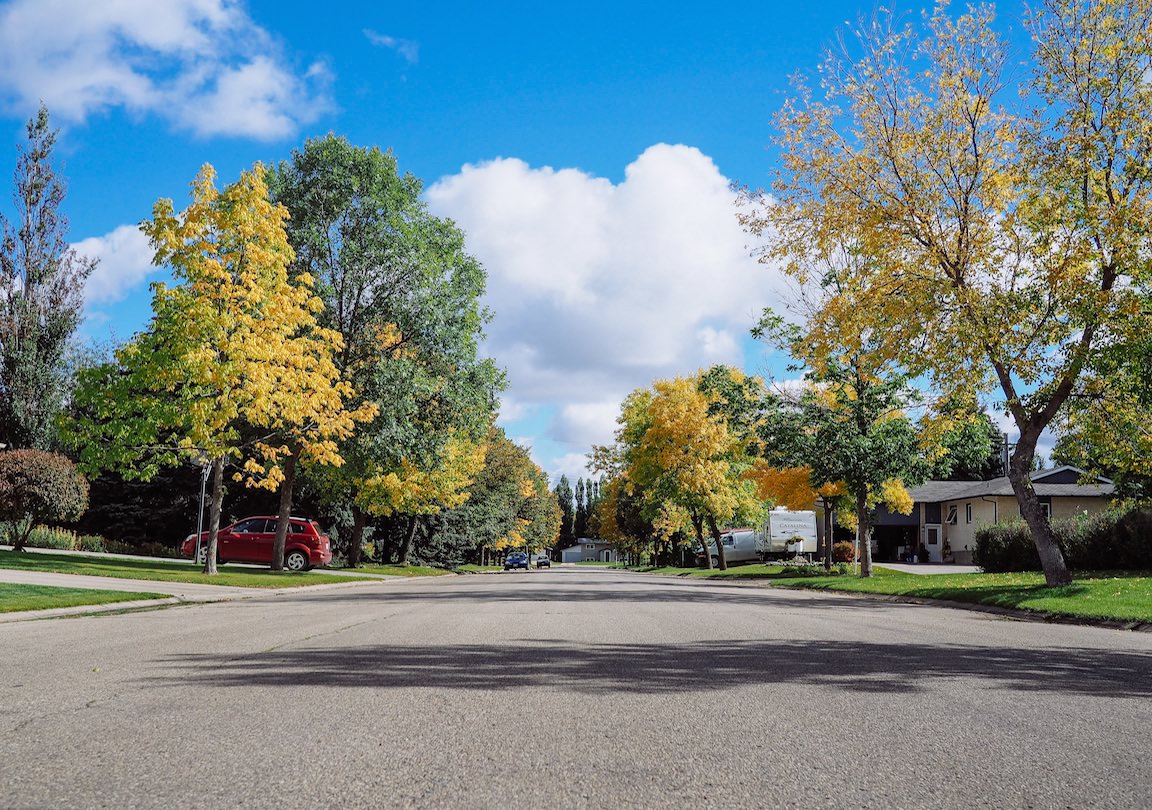
Conclusion
There is no perfect camera or perfect system in the world today. Every system is either too this or too that and the only way to fall in love with a system is to find the one that fits your needs perfectly. For some, this may mean their camera needs to be aesthetically beautiful. For others, this means the camera needs to be technically sound with fantastic high ISO performance and stunning full frame bokeh.
For my wife and I, the best camera system is the one that is small enough and cheap enough to push us to learn photography and to snap great photos on the spot without thinking about settings. It’s a camera that can be taken anywhere and carried in any bag. And it’s a camera that we can grow into in the long run.
The Olympus OM-D E-M10 isn’t a perfect camera and has some weaknesses as well, specifically the lack of weatherproofing, the placement of the on/off switch, the poor quality neckstrap and the sensitivity of the electronic viewfinder. Considering the number of dollars I spent to obtain the E-M10, I’m blown away by how little I dislike.

In contrast, the E-M10 can create drop-dead gorgeous images without needing to blink. Almost all the photos above were shot with the same wide-open aperture and were tweaked slightly in Lightroom. Feeling like an artist is extremely addicting and the E-M10 is 100% responsible for introducing my newfound artistic addiction.
If you find yourself looking for the same kind of camera, I can’t recommend this the Olympus OM-D E-M10 more highly. It’s one of my favourite and most prized possessions and I never see myself shooting a vacation on an iPhone again.
Even Casey Liss had to be taught about aperture, ISO and shutter speeds on a recent ATP episode. He can’t be the only person who doesn’t know about this stuff. ↩
Leica can’t be the only company capable of making a beautiful camera. If the Leica T was even reasonably priced, I would jump all over it. Alas, $4000 to get started is far from the investment we wanted to make a few months ago. ↩
Which, by the way, is the better looking of the two models in my opinion. I originally asked for a silver model at the store but decided on black instead. The black E-M10 body is far less noticeable and doesn’t attract attention — perfect for street photography in New York City. ↩
Which is me saying "never". ↩